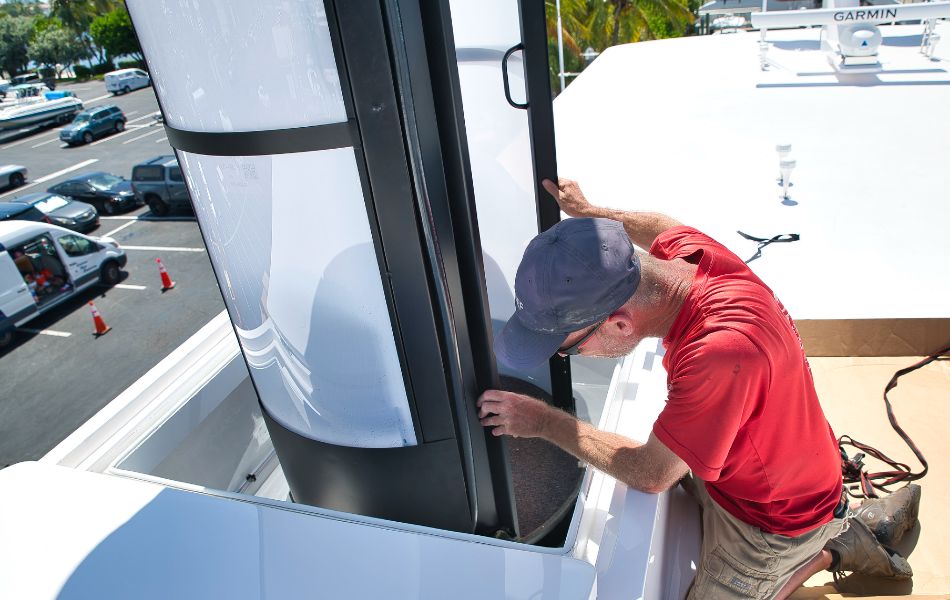Residential elevators NEED SERVICING as they have become a popular addition to modern homes, providing convenience, accessibility, and a touch of luxury. These elevators require regular maintenance to ensure optimal performance, safety, and longevity. In this article, we will delve into the frequency of servicing residential elevators, providing insights to help homeowners make informed decisions. So if you think about how often do residential elevators need servicing, this article is for you.
Understanding Residential Elevator Maintenance: How often do residential elevators need servicing?
Residential elevators are sophisticated systems that consist of mechanical, electrical, and technological components. Routine maintenance is crucial to prevent malfunctions, address minor issues before they escalate, and maintain safe operation. The frequency of servicing depends on various factors, including elevator type, usage patterns, manufacturer recommendations, and local regulations.
Factors Influencing Servicing Frequency
If you focus on the factors that affect servicing frequency, you will be able to know the answer of “How often do residential elevators need servicing”.
1. Usage
Elevator usage plays a significant role in determining the frequency of maintenance. High-traffic residential buildings may require more frequent servicing compared to homes with minimal elevator usage.
2. Manufacturer Guideline
Each residential elevator model comes with specific maintenance recommendations provided by the manufacturer. These guidelines outline routine inspection intervals and service requirements. Following these guidelines is essential to keep warranties valid and ensure optimal performance.
3. Local Regulations
Some regions have specific regulations regarding elevator maintenance. Homeowners should familiarize themselves with these regulations and adhere to the recommended servicing schedules.
Recommended Servicing Intervals
Regular inspections help identify and address potential issues before they lead to major breakdowns or safety hazards. The following are recommended servicing intervals based on typical scenarios. This section will tell what type of servicing you will need including how often do residential elevators need servicing.
Annual Servicing
For most residential elevators, an annual servicing is considered the minimum requirement. This frequency ensures that the elevator receives regular attention and any minor issues can be addressed promptly. An annual service typically includes a comprehensive inspection of mechanical, electrical, and safety components, lubrication of moving parts, adjustment of door mechanisms, and testing of emergency systems.
Semi-Annual Servicing
In situations where the elevator experiences heavy usage, such as in multi-unit residential buildings or homes with a large number of occupants, it is advisable to schedule servicing every six months. Elevators subjected to frequent use may exhibit more wear and tear, and more frequent maintenance can help prevent premature component failure and ensure uninterrupted operation.
Customized Servicing
Depending on the elevator type, manufacturer recommendations, and usage patterns, it may be necessary to adjust the servicing frequency. Some elevators come with specific maintenance requirements that deviate from the standard guidelines. It is crucial to consult the manufacturer’s documentation or reach out to a professional elevator maintenance provider to determine the appropriate servicing interval for your specific elevator model.
Benefits of Regular Elevator Servicing
- Enhanced Safety: Safety is paramount when it comes to residential elevators. Regular servicing helps identify and rectify safety issues, such as malfunctioning sensors, faulty door mechanisms, or worn-out cables. Addressing these problems in a timely manner reduces the risk of accidents and ensures the elevator operates safely for passengers.
- Improved Performance: Routine maintenance keeps the elevator in optimal condition, resulting in smoother and more reliable operation. Regular lubrication of moving parts reduces friction, prolongs component life, and minimizes the chances of sudden breakdowns. Well-maintained elevators provide a comfortable and efficient transportation experience for residents and guests.
- Cost Savings: While scheduling regular maintenance may incur some expenses, it is a cost-effective approach in the long run. By detecting and addressing minor issues early on, you can prevent major breakdowns that may require expensive repairs or component replacements. Regular servicing also helps extend the lifespan of your elevator, reducing the need for premature replacements.
- Compliance with Regulations: Adhering to local regulations regarding elevator maintenance is essential for homeowners. Failure to comply with these regulations may lead to penalties or even the suspension of elevator operation. Regular servicing ensures that your elevator meets the necessary safety standards and satisfies legal requirements.
The Advantages of Pneumatic Vacuum Elevators
While traditional traction and hydraulic elevators are common in residential settings, Pneumatic Vacuum Elevators (PVEs) offer unique advantages worth considering. PVEs utilize air pressure changes to move the elevator car, eliminating the need for cables or pistons. Here are some benefits of PVEs:
- Space Efficiency: PVEs have a compact design, requiring minimal space for installation. They can be easily integrated into existing homes without extensive structural modifications.
- Energy Efficiency: PVEs operate using air pressure, consuming significantly less energy compared to traditional elevators. The absence of cables and counterweights reduces the power required for operation.
- Smooth and Quiet Operation: PVEs offer a smooth and quiet ride experience. The absence of mechanical components, such as cables and pulleys, reduces noise levels and vibrations.
- Design Versatility: PVEs have a contemporary and elegant design that can complement various architectural styles. The transparent cylindrical shaft and panoramic views create a visually appealing and unique elevator experience.
Conclusion
By following manufacturer guidelines and local regulations, homeowners can determine the appropriate servicing intervals for their residential elevators. While an annual servicing is typically recommended, it may be necessary to adjust the frequency based on usage patterns and specific elevator models. Regular maintenance offers several benefits, including enhanced safety, improved performance, cost savings, and compliance with regulations.
Additionally, Pneumatic Vacuum Elevators (PVEs) present an alternative option for homeowners seeking efficiency and style. With their compact design, energy efficiency, smooth operation, and design versatility, PVEs can be a compelling choice for residential elevator installations.
In conclusion, residential elevators require regular servicing to ensure optimal performance and safety. Homeowners should consult manufacturer guidelines, consider usage patterns, and adhere to local regulations when determining the frequency of maintenance. By investing in regular servicing and exploring innovative options like Pneumatic Vacuum Elevators, homeowners can maximize the efficiency, safety, and overall value of their residential elevators, enhancing the convenience and luxury they bring to modern homes.
References








